(Applicable since 1st January 2014)
Ordinance HAP/2215/2013 of 26 November, published at the Official Gazette of the 29 November 2013, modifies several ordinances, among other the ordinance that regulates the VAT return, Form 303…
(Applicable since 1st January 2014)
Ordinance HAP/2215/2013 of 26 November, published at the Official Gazette of the 29 November 2013, modifies several ordinances, among other the ordinance that regulates the VAT return, Form 303, and the ordinance that regulates the Register books of invoices return, Form 340. This regulation can be downloaded at the site: https://www.boe.es/boe/dias/2013/11/29/pdfs/BOE-A-2013-12489.pdf
VAT return, Form 303
The main changes as regards the VAT return, Form 303 (see attached), are the following:
Changes affecting the format:
a) There is a breakdown of the transactions when the VAT needs to be self-assessed by the client, so:
- Intra-community acquisitions of goods and services must be declared in boxes nº 10, 11 and nº 36, 37. It must be noted that, before, the intracommunity acquisitions of services were not to be declared in the same box as the intracommunity acquisitions of goods.
- Other transactions for which there is local reverse-charge are to be declared separately in the output VAT boxes nº 12 and 13.
b) Transactions for which there is a modification in the taxable base and VAT quota must be declared separately in the output VAT boxes nº 14, 15, for normal transactions, and nº 25, 26 for the equivalence retail special scheme.
c) Modifications in the deducted taxable bases and VAT quotas must be declared separately in the input VAT boxes nº 40, 41.
d) Special boxes have been included so the following situations are declared:
- Taxable subjects having opted for the application of the special cash criteria scheme (articles 163 decies to 163 sexiesdecies of the Spanish VAT Law), or being recipients of operations to which the said scheme applies must declare separately the amount of sales and purchases falling under the special cash criteria scheme in boxes nº 62, 63 and nº 74, 75.
- Taxable subjects who wish to opt or renounce the application of the special pro-rata (article 103, paragraph 2 number 1º of the Spanish VAT Law) must exercise their option at the last VAT return of the taxable year.
- Taxable subjects who have been declared bankrupt during the taxable period must indicate whether the return refers to transactions carried out before or after the date of the said declaration of bankruptcy (article 71, paragraph 5 of the VAT Regulations).
- Taxable subjects to which the special simplified scheme applies (articles 122 and 123 of the Spanish VAT Law), shall now declare their operations using Form 303, instead of Forms 310, 311, 370 and 371, which have been eliminated. To this end, a new page nº2 has been added to Form 303.
The dead-line for filing the monthly July VAT return is now the 20th of August (before it was the 20th September).
Register books of invoices return, Form 340
The main changes as regards the Register books of invoices return, Form 340, Form 340, are the following:
– Only companies that apply for the special monthly refund regime are obliged to file this return (the foreseen extension of the obligation to almost all taxable subjects has been derogated).
– The following changes are have been introduced in the existing format of Form 340 due to the entering into force of the new special cash criteria scheme:
- Invoices falling under this regime must be identified by a new key: “Z:special cash criteria scheme”.
- Additionally, the following key numbers may be used voluntarily:
- Special cash criteria scheme. Invoices summary book entry.
- Special cash criteria scheme. Invoice with several book entries (different VAT rates).
- Special cash criteria scheme. Correcting invoice.
- Special cash criteria scheme. Purchases carried out by travel agents directly in the interest of the traveler.
- Special cash criteria scheme. Simplified invoice.
- Special cash criteria scheme. Rectification of registry errors.
- Special cash criteria scheme. Invoicing of the services provided by travel agents that act as intermediaries in another´s name and behalf.
- Special cash criteria scheme. Rental of a business space.
- In the Register book of sales, whenever key “Z” is marked, the following data must be declared:
- Date of collection (date in which the VAT becomes chargeable according to the cash criteria regime).
- Amount collected.
- Means of collection (“C”: bank account; “T”: cheque; “O”: other means; leave empty if no collection yet).
- Bank account or means of collection used (bank account number or cheque number; description or identification of other means; leave empty if no collection yet).
- In the Register book of purchases, whenever key “Z” is marked, the following data must be declared:
- Date of payment (date in which the VAT becomes chargeable according to the cash criteria regime).
- Amount paid.
- Means of payment (“C”: bank account; “T”: cheque; “O”: other means; leave empty if no collection yet).
- Bank account or means of payment used (bank account number or cheque number; description or identification of other means; leave empty if no collection yet).
Manuel Pérez de Algaba / Pablo Luján Gil,
IVA CONSULTA

